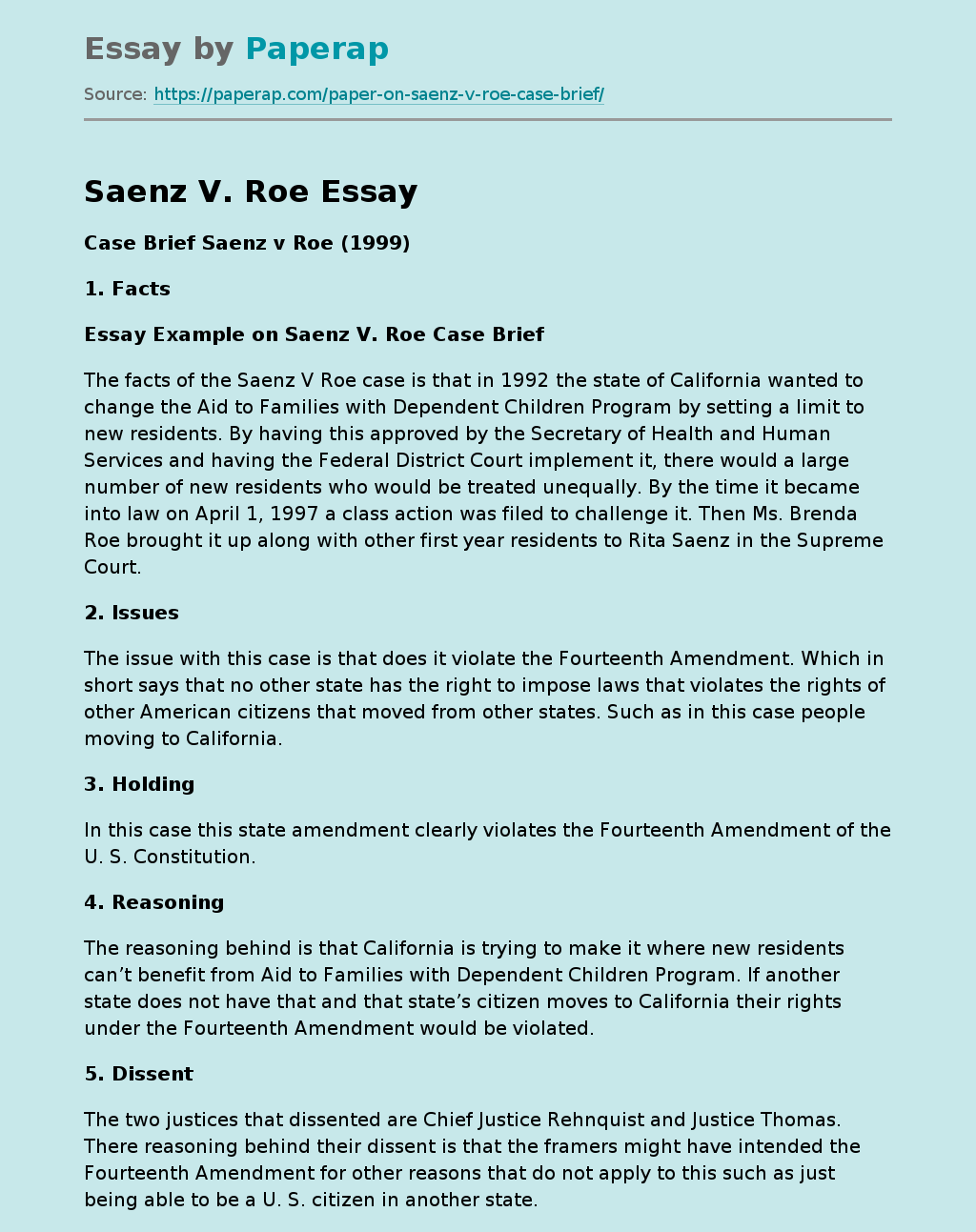Saenz v Roe (1999) Case Brief
Case Brief Saenz v Roe (1999)
1. Facts
Essay Example on Saenz V. Roe Case Brief
The facts of the Saenz V Roe case is that in 1992 the state of California wanted to change the Aid to Families with Dependent Children Program by setting a limit to new residents. By having this approved by the Secretary of Health and Human Services and having the Federal District Court implement it, there would a large number of new residents who would be treated unequally. By the time it became into law on April 1, 1997 a class action was filed to challenge it.
Then Ms. Brenda Roe brought it up along with other first year residents to Rita Saenz in the Supreme Court.
2. Issues
The issue with this case is that does it violate the Fourteenth Amendment. Which in short says that no other state has the right to impose laws that violates the rights of other American citizens that moved from other states. Such as in this case people moving to California.
3. Holding
In this case this state amendment clearly violates the Fourteenth Amendment of the U. S. Constitution.
4. Reasoning
The reasoning behind is that California is trying to make it where new residents can’t benefit from Aid to Families with Dependent Children Program. If another state does not have that and that state’s citizen moves to California their rights under the Fourteenth Amendment would be violated.
5. Dissent
The two justices that dissented are Chief Justice Rehnquist and Justice Thomas. There reasoning behind their dissent is that the framers might have intended the Fourteenth Amendment for other reasons that do not apply to this such as just being able to be a U.
S. citizen in another state.
Saenz v Roe (1999) Case Brief. (2019, Nov 27). Retrieved from https://paperap.com/paper-on-saenz-v-roe-case-brief/

